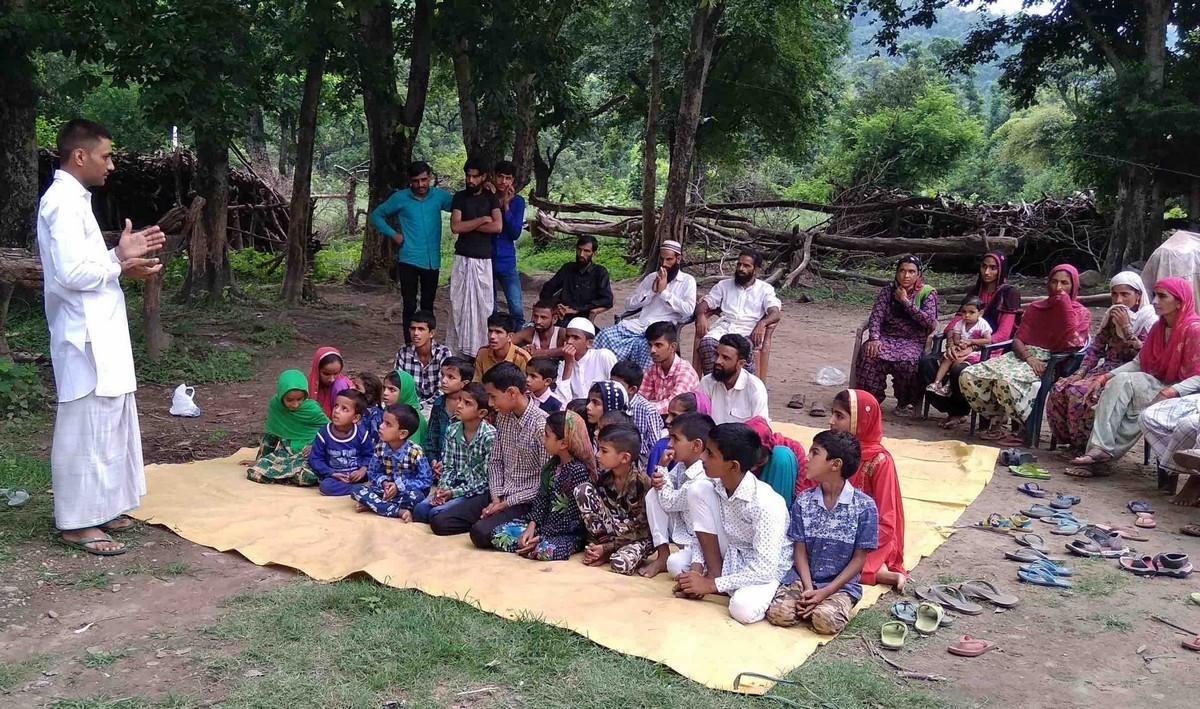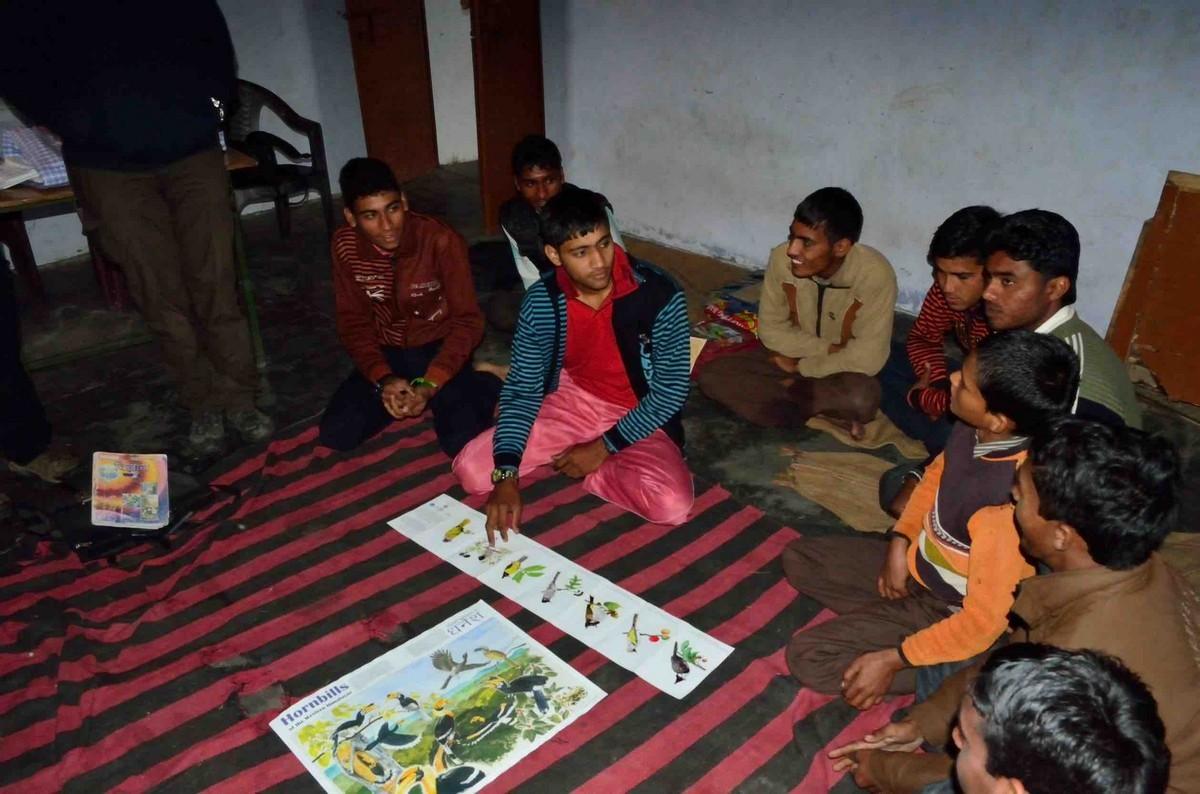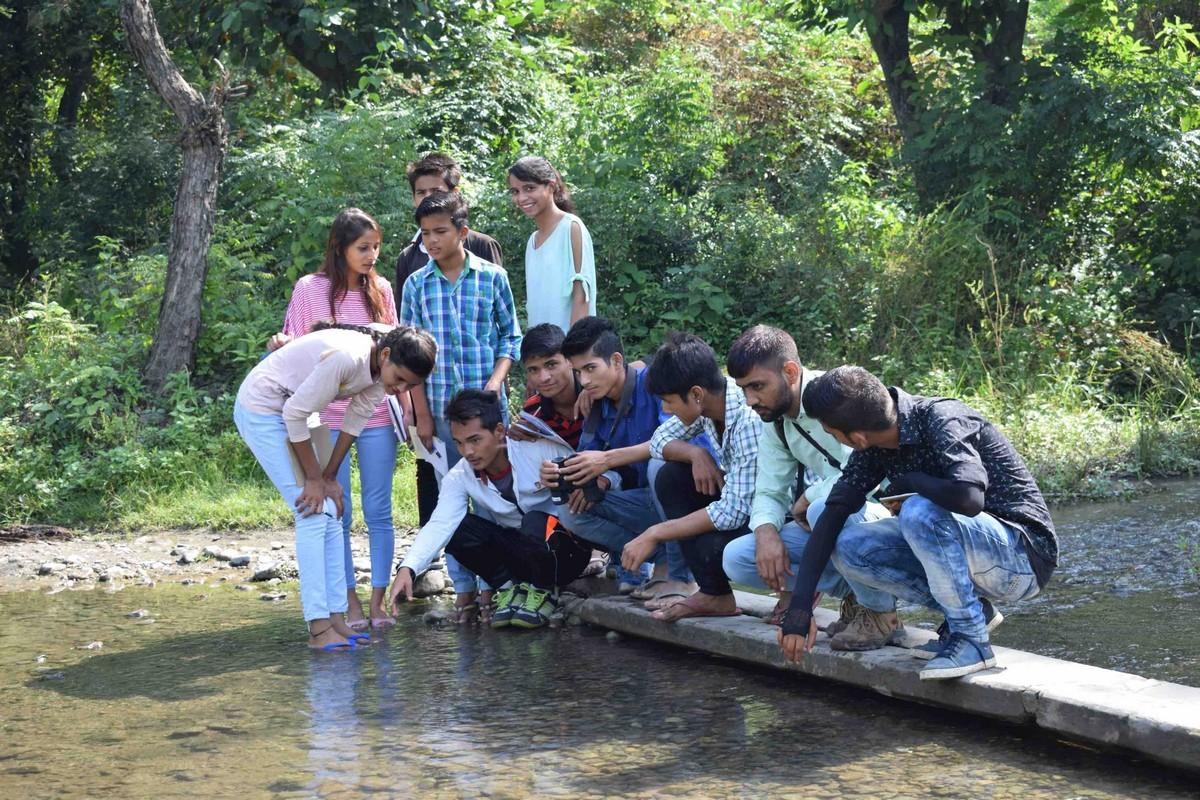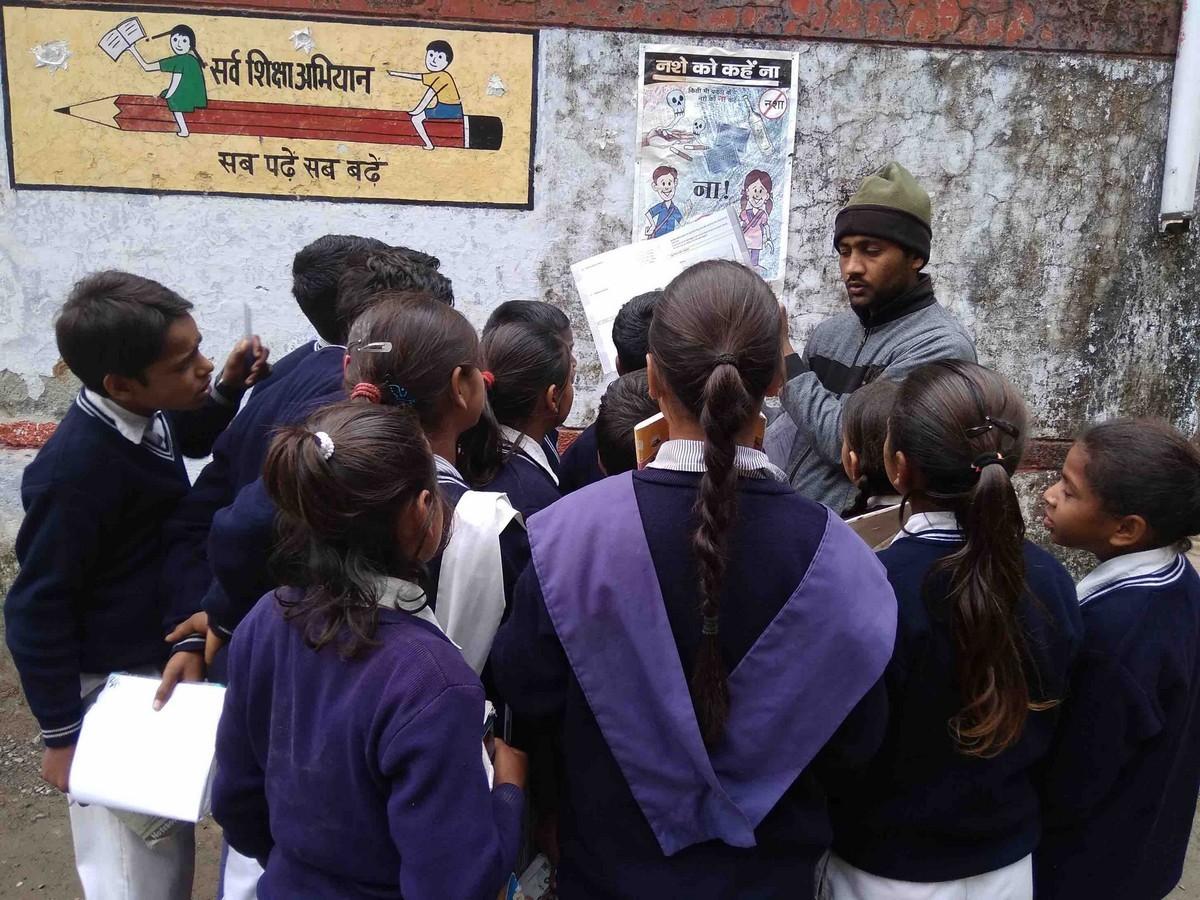Meet an Educator is a monthly series by Early Bird, where we feature the work of educators across India who are actively spreading the joy of birds and nature. This month’s featured educator is Taukeer Alam Lodha, a nature educator from Uttarakhand who has been working towards nature conservation for the last 10 years.
The original Hindi version of this interview can be found here.
Do tell us about yourself, where you are from, and your work.
I am from Rajaji National Park in Uttarakhand and belong to the Van Gujjar nomadic tribe. I have been working in my community for the last 10 years. The members of my community who still live in the forests, do not have access to schools. I have formed a group called ‘Maee’ that works with children there. We focus on activity-based learning to teach languages, math, art and nature education.

Are you a birder? What about birdwatching excites you?
I have been watching birds since childhood and have grown up in the midst of nature. I find bird migration most fascinating. How do small birds make these long and arduous journeys? I read there are some birds that eat more than their own body weight to be able to make the journey. Such facts make the topic of birds and birdwatching so exciting. I also like to watch birds because they are colourful and exhibit many interesting behaviours.
When and how did you get interested in bird/nature education?
I’ve lived all my life in forests. I know and understand my environment and surroundings. But when I got a chance to interact with scientists, I started getting interested in birds. I learnt about their behaviours, their migration, how they are part of the food chain and so much more. Not just birds but I also learnt about other aspects of nature, like the role that the fig wasp plays in the environment, which grew my interest and got me hooked.
Environment education and conservation are the burning topics of the day, and I have been associated with these issues for 8-10 years now. But in my experience, when we talk to adults about this, they either are not interested, or they already know these things and start lecturing back. It is much easier to connect children to these subjects and speak to them about nature. This is why I like working with children. The next generation is our only hope. It is difficult to change those who are already set in their ways (adults).
What do you hope to achieve through your education work?
I feel like the earlier generations had a deep connection with nature, which is mostly lost now and people are busy with their own day-to-day lives. Speaking about Uttarakhand, the Chipko movement started here, and that generation cared about the environment. Now we see a lot of trees getting cut, roads being widened, and people don’t care. How do we bring back that connection with nature among people, and make them feel responsible and invested in maintaining the balance of nature? These are big issues but we are trying to make a small contribution through our work.

Why do you believe it is important for children to learn about birds or connect with nature?
As I said before, sometimes adults are not responsive or busy with their own lives to care much about nature. But if children are given the right environment and opportunities, it is possible to get them interested. Take the example of language. Children pick up whichever language is spoken around them, whether it is English or Punjabi. In the same way, nature education is something that is easy to take to children. We just need to create the right environment for it.
What tools or resources have helped you in teaching about birds? Can you describe an approach that has worked well for you?
The first time I observed a bird through binoculars I felt like a whole new world opened up before me. Binoculars are the most invaluable tool which gets children excited. In terms of resource materials, we prefer to use resources with local context and in the local language. Nature-based games, traditional games, folk tales – all have been very useful for our nature education work. In the Van Gujjar community there is a folktale about the woodpecker, we use such stories which the children can directly relate to. When we speak about nature education to children, it should not be a serious subject which is taught in the classroom. They need to spend time outdoors, go on nature walks where they are free to explore and are enthused about the experience.
Have you encountered a significant challenge as a bird/nature educator, how did you overcome it?
Initially we didn’t have appropriate resource materials for children. So we started with story-telling and folk tales. Later we received various materials, including from Early Bird. There are also a lot of story books in Hindi now. Earlier we didn’t have binoculars, but people started donating binoculars to us and it has made so much difference.
Do share any memorable moment or experience you have had in teaching kids about birds/nature.
When I go for walks with children, I do not focus on ‘knowledge’ but I ask them questions. Once I took children to a large banyan tree where they could see hornbills feeding on the berries by tossing them in the air. I asked the children why they are eating this way. This unleashed their imagination and they came up with the answer that hornbills have a small tongue and that’s why they toss the berries and eat. Their answer stunned me. We come with pre-conceived notions, but children are capable of surprising us.

Can you recall any insightful instance that shaped your perspective?
There is a young boy Imran who is from our center and with whom I did just a simple nature walk. I met him after 6 months and found that he now knows quite a lot about birds – their migration, behaviours, their territorial fights, their songs. He doesn’t know English but he looked into the field guide (distribution maps) and understood that red indicates summer and blue winter. He made me realize that all that is needed is to light that spark in children and create a supportive environment. It is not necessary to create full-fledged courses or to always have a teacher. This used to be my thinking too earlier. But I’ve understood now, thanks to Imran, that it is not that learning can happen only through the educator. We do not need to spoonfeed children. They can think and learn on their own.
Have you noticed any changes in your learners after they received exposure to birds and nature-based learning? If yes, what are they? If not, why do you think that is?
Children become more aware and start looking at everything from a fresh perspective. Hunting was prevalent in Jhilmil conservation reserve (where we work). Children would happily go along on these hunting sprees and destroy nests of bee-eaters. After we started working with some of the children we found that they have passed on the awareness to other children around them and tried to stop them from hunting. We find that children themselves start thinking about conservation when exposed to nature education.

What message would you have for your fellow educators, or somebody starting out in their nature education journey?
Those who are just starting out – be observant, spend a lot of time in nature and you will find that learning starts happening on your own. My advice to educators – don’t try to only impart ‘knowledge’. Go out with children and become a child yourself. Learn along with them. Nature education should not remain just a lecture!


Taukeer Alam you are very intelligent and good man
congrats dear for this wonderful activity